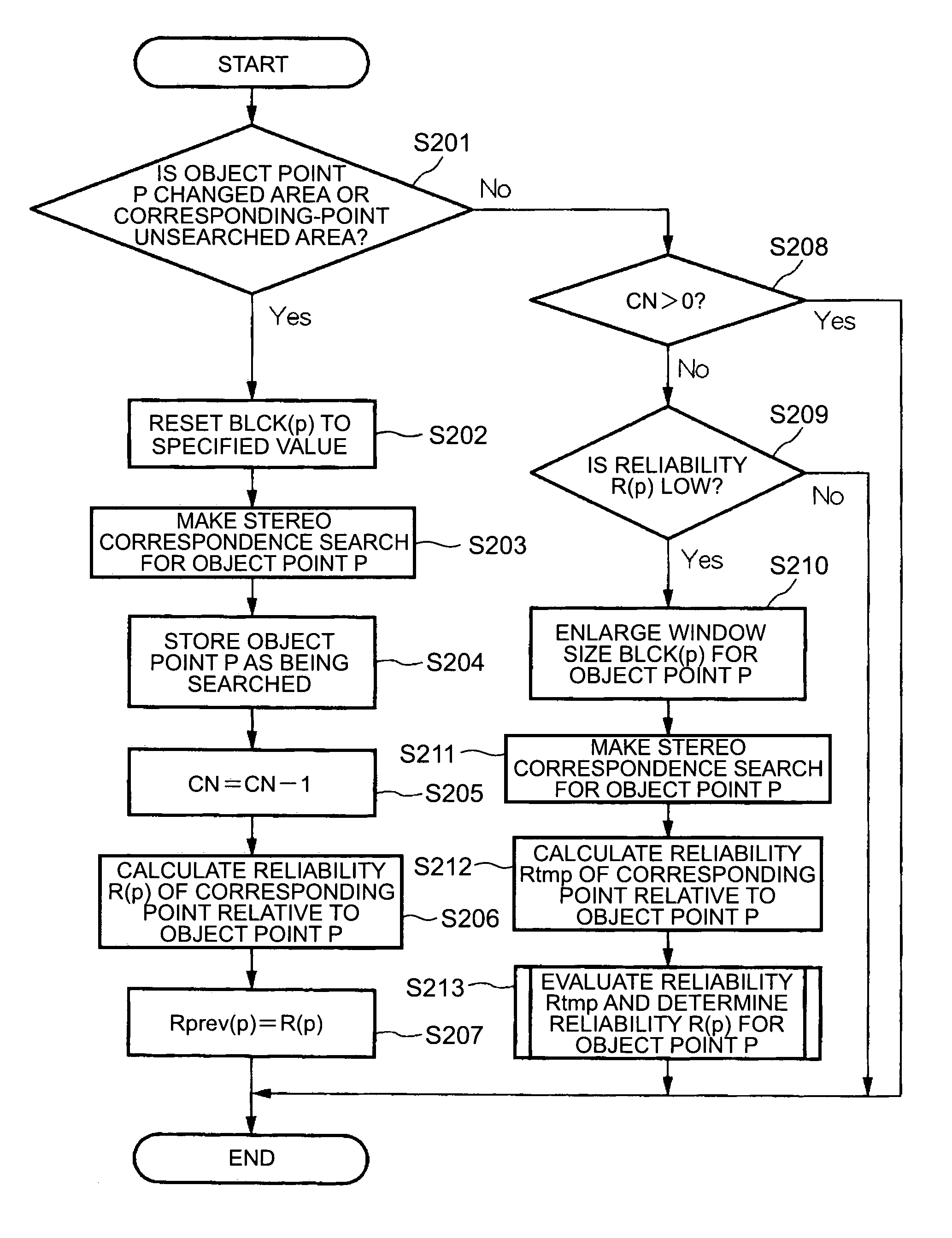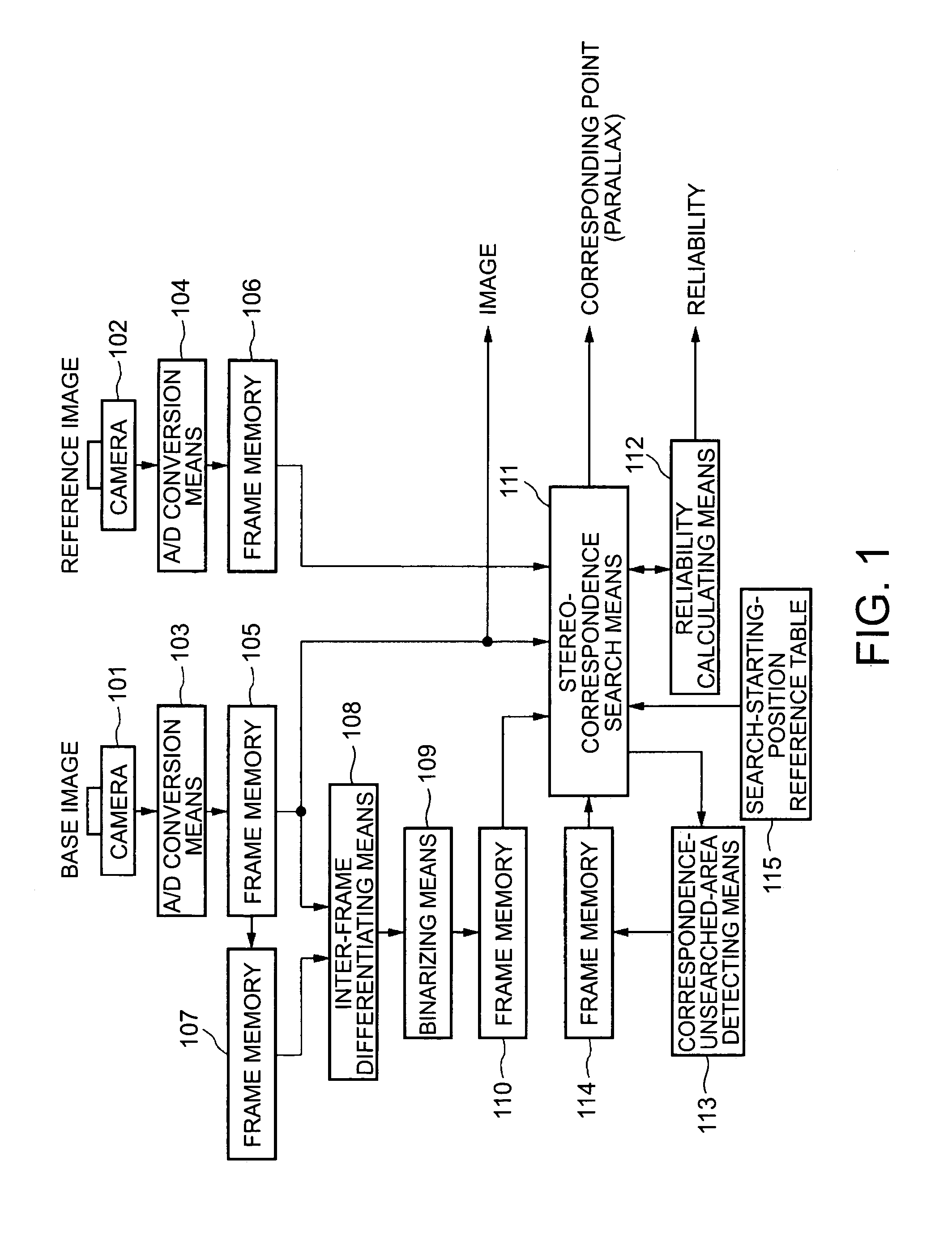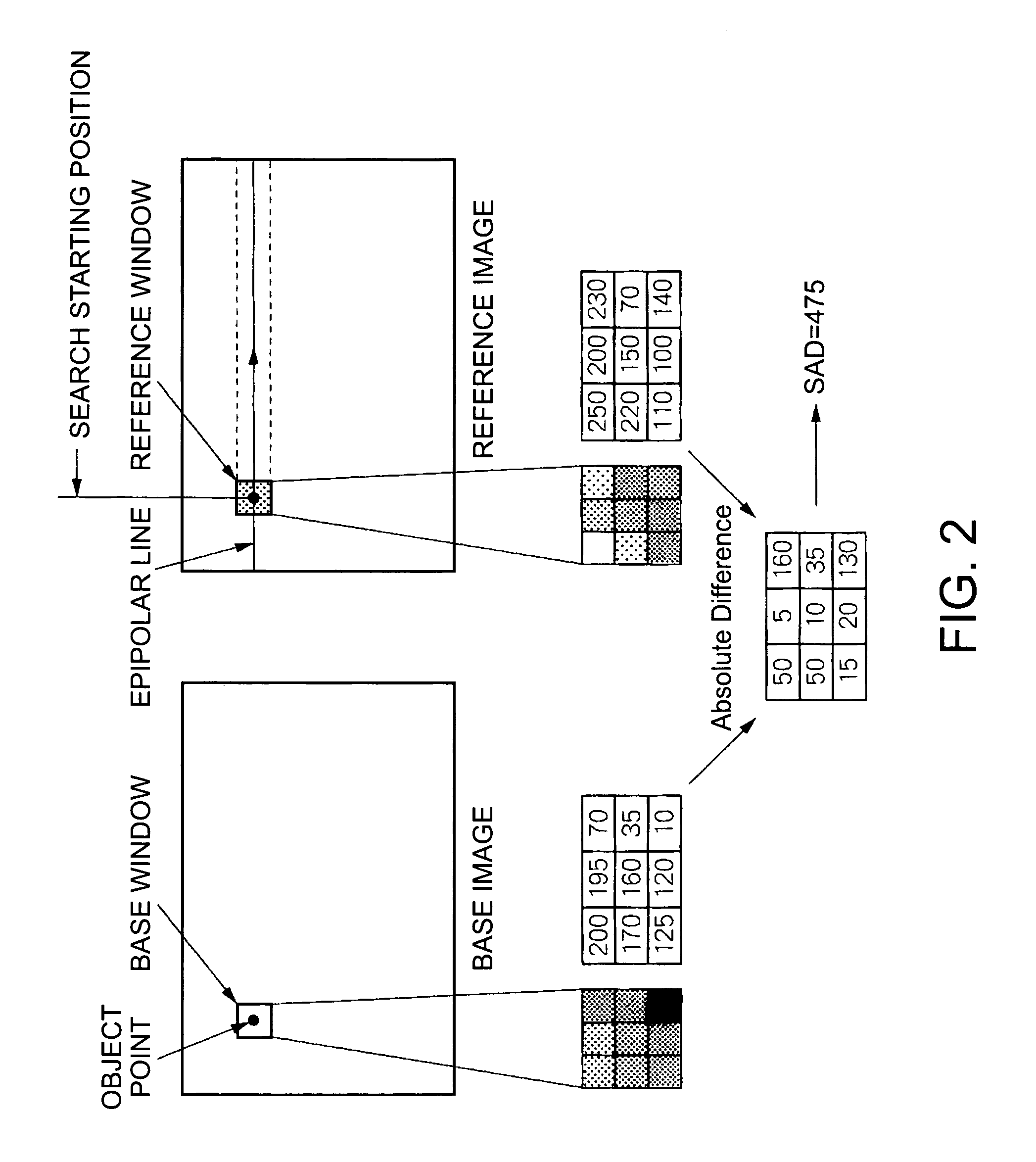Method, apparatus, and program for processing stereo image
a stereo image and program technology, applied in image data processing, distance measurement, instruments, etc., can solve the problems of reducing the reliability of parallax measurement accuracy, low density distribution of measured data, and the possibility of increasing erroneous measurement, so as to reduce processing time and reduce reliability , the effect of high reliability
- Summary
- Abstract
- Description
- Claims
- Application Information
AI Technical Summary
Benefits of technology
Problems solved by technology
Method used
Image
Examples
Embodiment Construction
[0034]FIG. 1 is a block diagram of an example of an apparatus for implementing a stereo-image processing method according to the present invention. The arrangement of a stereo-image processing apparatus according to an embodiment of the invention will be described hereinafter with reference to FIG. 1.
[0035]Referring to FIG. 1, numerals 101 and 102 denote stereo cameras for simultaneously imaging an object from different points of view. The camera 101 picks up a base image for a stereo correspondence search. The camera 102 picks up a reference image for searching for a point corresponding to a point in the base image taken with the camera 101. Numerals 103 and 104 denote A / D conversion means for converting analog signals outputted from the cameras 101 and 102 to digital signals, respectively. Many new cameras have an A / D converter built-in to output digital signals and, in such a case, there is no need to use the A / D converters 103 and 104.
[0036]Frame memories 105 and 106 store the b...
PUM
 Login to View More
Login to View More Abstract
Description
Claims
Application Information
 Login to View More
Login to View More - R&D
- Intellectual Property
- Life Sciences
- Materials
- Tech Scout
- Unparalleled Data Quality
- Higher Quality Content
- 60% Fewer Hallucinations
Browse by: Latest US Patents, China's latest patents, Technical Efficacy Thesaurus, Application Domain, Technology Topic, Popular Technical Reports.
© 2025 PatSnap. All rights reserved.Legal|Privacy policy|Modern Slavery Act Transparency Statement|Sitemap|About US| Contact US: help@patsnap.com



